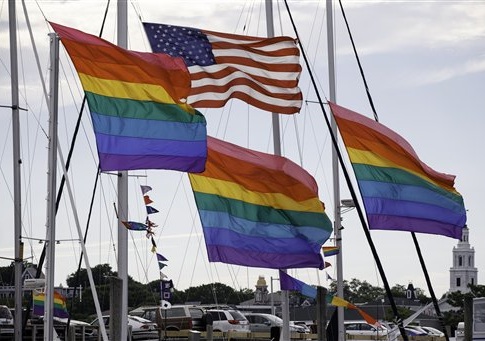The federal government is still seeking answers as to why the majority of lesbians are obese and U.S. taxpayers are footing the bill, which now totals $2.87 million.
The National Institutes of Health (NIH) study is now in its fourth year, receiving an additional $670,567 for fiscal year 2014. The project seeks to determine why "nearly three-quarters of adult lesbians overweight or obese," and why gay males are not.
In just two years the project’s budget has nearly doubled, growing from $1.5 million to nearly $3 million today, despite fears that sequestration could jeopardize the project and other NIH funding.
The study, which is being led by S. Bryn Austin, an associate epidemiologist at Brigham and Women’s Hospital, operates on the premise that there is a "striking interplay of gender and sexual orientation in obesity disparities."
The researchers have been busier since last year, when the project had yielded only one paper. Those results concluded that gay and bisexual males had a "greater desire for toned muscles" than straight men.
The project now claims that lesbians have lower "athletic-self esteem" that may lead to higher rates of obesity. Another research paper found that lesbians are more likely to see themselves at a healthy weight, even though they are not.
Their research found that lesbians, gays, bisexuals, and "mostly heterosexual" adolescents exercise one to two hours less a week compared to heterosexuals. The paper also said sexual minorities are 46 to 76 percent less likely to be on a sports team, due to "gender nonconformity and athletic self-esteem."
"Physical activity contexts should be modified to welcome sexual minority males and females," the authors concluded. "Targeting intolerance of gender nonconformity and fostering athletic self-esteem may mitigate sexual orientation [moderate/vigorous physical activity] MVPA disparities."
Finally, the project has produced a paper claiming teens that are more feminine or masculine are more likely to engage in behaviors that can cause cancer. The study makes this claim after finding that feminine girls like to go to tanning salons and masculine boys tend to smoke.
"Prevention efforts that challenge the ‘masculinity’ of smoking cigarettes and cigars and chewing tobacco and the ‘femininity’ of indoor tanning to reduce their appeal to adolescents should be explored," the paper said.
The sexual orientation and obesity study is slated to last until 2016. The latest grant comes receiving $682,873 last year, $778,622 in 2011, and $741,378 in 2012. The total for the project thus far is $2,873,440.
